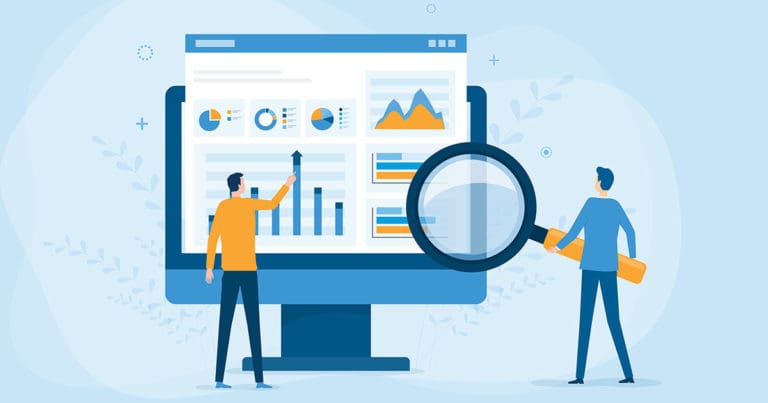How to Use Strategic Data Analysis to Grow Your Business

All businesses are trying to better capitalize on their data and analytics to keep up with our increasingly data-driven world.
With the exception of leading companies like Amazon, most firms are still not finding value in their data strategy, and many are unsure where to start.
It’s easy to collect the data, but then what? How do you make the data work for you and inform your business strategies?
Smarter companies will leverage data analysts to develop strategic data analysis, whereby creating actionable insights.
What is strategic data analysis?
Strategic data analysis is when you use different tools and processes to help businesses collect and study specific data to make informed and strategic business decisions.
Companies are gathering an unprecedented amount of data on their customers.
After all, data can help you predict your customers’ needs, desires, and future behaviors and impact your brand in a competitive market.
Why is strategic data analysis important?
Strategic data analysis creates real value: by transforming data into actionable insights, businesses can use it for revenue maximization, product growth, and brand awareness.
Did you know:
- 73% of company data is collected but never used for real analytical insights,
- 74% of companies have stated they want to be data-driven,
- however, only 29% of those companies claim they could actually use the data to drive change
But collecting data is not enough to develop your business strategy — you need to be able to provide context and meaning to data in order for it to become an insight that is actionable.
Data without insight is simply a fact, and insights without actionable results are simply cool facts.

How to use strategic data analysis to grow your business
1. Assess your organization’s data analysis capabilities
Take a look at your current landscape — even better if you involve a diverse sample of employees to assess with you — and ask yourself the following questions:
- Is there a culture of asking the right analytical questions that solve business problems?
- Do managers feel prepared to use the company’s data to address business issues?
- Does my organization empower employees to use creative analytical methods?
- Does the company use data collaboratively and is it shared across multiple business units?
Based on your findings, you can work with a data analyst to hone in on areas of weakness to improve on and capitalize on strengths to leverage in your data strategy.
2. Implement data democratization
Data democratization means making data available to everyone within the organization without the barriers of needing technical expertise.
This allows anyone in your company to access data and use it to make decisions and recommendations.
The idea behind data democratization is that when more people have access to company data, the faster the company will adopt a data-driven decision-making culture from top to bottom.
Some examples of data democratization that smarter companies implement:
- ensure their company data is accessible to those who can leverage it
- maintain privacy and security for that data
- implement smart compliance practices that adhere to corporate governance and industry regulations
3. Use a centralized data management platform (DMP)
Many data-savvy companies use a DMP or customer relationship management (CRM) software to remove the obstacles that interfere with accessing data.
They execute an analytics strategy for their entire workforce and expand the possible ways company data can be applied.
4. Make sure your data analysis strategies align
Ask yourself: is your organization’s business strategy supported by a sound data strategy?
Think about how analytics effectively complement both short-term and long-term business strategies and how your company can make internal and process changes to align the mission.
Ensure insights and knowledge gained from your analytics strategy are properly leveraged across departments and initiatives.
5. Tell a story with data analysis
Highlighting a narrative by showcasing that data is often the trickiest part of strategic data analysis.
“Data storytelling is ultimately about understanding context and inspiring change or action. When data analysts review and present their data, a story can help them communicate complex ideas and simplify (and accelerate) the decision-making process for stakeholders” via LucidChart.
PODCAST: Erin Lynch Discusses How to Use Strategic Data Analysis to Grow Your Business
Hire the best data scientists & analysts to drive your strategy
By now, you understand why Data Science roles are some of the most important jobs in any company — without these roles, companies would be unable to make sound business decisions and impact growth.
Let’s take a look at the six highest-paid Data Science jobs and their corresponding salaries — fully broken down in our Tech Salary Guide.
Data Science Salaries by Position, Low & High
| Position | Low | High |
| Data Architect | $145,000 | $225,000 |
| Big Data Engineer | $140,000 | $200,000 |
| BI Architect | $125,000 | $190,000 |
| Data Scientist | $110,000 | $250,000 |
| Data Warehouse Engineer | $110,000 | $190,000 |
| Data Engineer | $110,000 | $185,000 |
Find great data scientists when you partner with Mondo
Looking to hire a data analyst? Contact us to get started:
Continued reading for top industry salaries and trends:
- Mass Layoffs in 2022: What’s Next for Employees?
- Top 5 Benefits of Contract-to-Hire Positions in Tech
- 10 Tech Jobs That Saw the Highest Salary Growth This Year
- Pay Transparency: What States Have It & Why It’s Important



